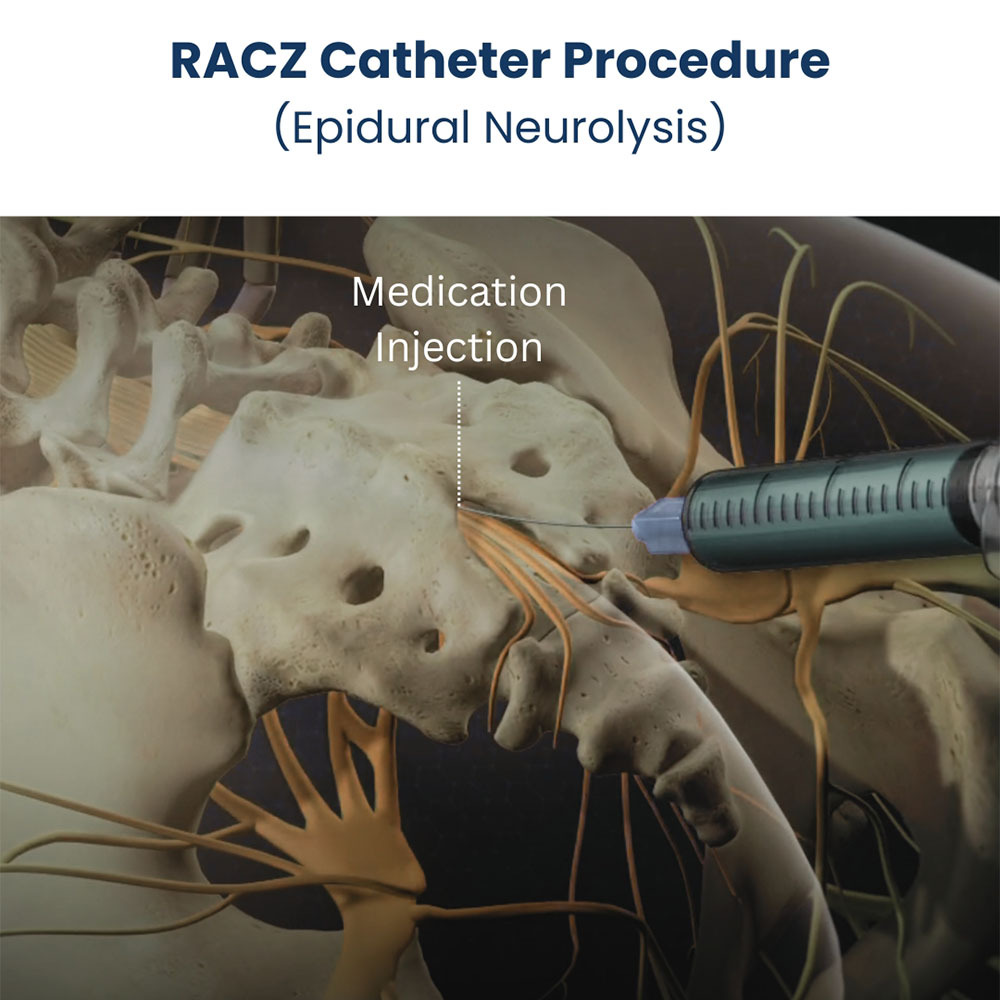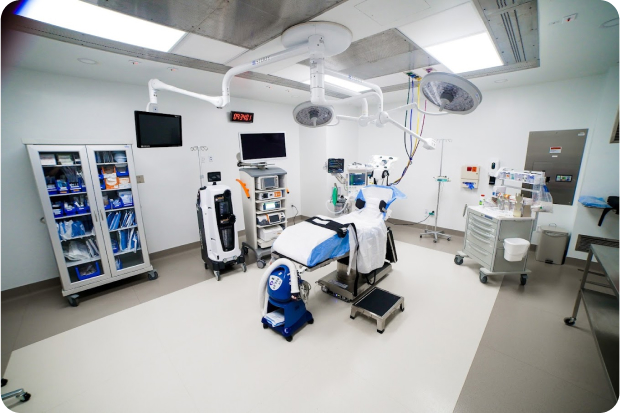 OUR LOCATIONSCall to book (212) 604-1300
OUR LOCATIONSCall to book (212) 604-1300
 OUR LOCATIONSCall to book (212) 604-1300
OUR LOCATIONSCall to book (212) 604-1300
Table of contents
The RACZ catheter procedure, also known as epidural neurolysis, is designed to relieve pain caused by scar tissue wrapped around nerves in the spinal epidural space. By removing some of this scar tissue, the procedure facilitates the delivery of drugs, such as cortisone, to the affected areas, reducing pain.

A small, flexible catheter is fed through the needle and positioned at the location of the scarring. A steroid-anesthetics mix is injected through the catheter and around the scarring, bathing the painful area in medication and dissolving the scar tissue.
The needle and catheter are removed. In some cases, it may be necessary to keep the catheter in place to allow for more injections over the next few days. It also may be necessary to repeat the procedure a few months later to reduce scar tissue further.




While this is generally considered a very safe procedure, it is important to remember that, as with any medical procedure, there are risks and possible side effects.
Complications resulting from selective nerve root blocks and epidural steroid injections can include:
Other side effects are often related to the steroid drug itself and may include:


New York Pain Care
20 Squadron Blvd, Suite 290
New City, NY 10956
(212) 242-8160






